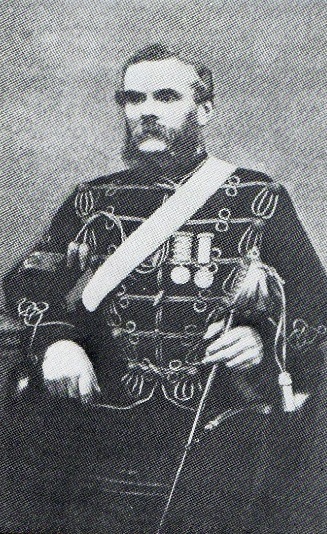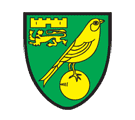Notable People » Sergeant-Major John Howes (1828 - 1902) - Balaclava veteran 
This person's individual page can be found here: http://howesfamilies.com/getperson.php?personID=I7773&tree=Onename
"Half a league, half a league,
Half a league onward,
All in the valley of Death
Rode the six hundred.
'Forward, the Light Brigade!
Charge for the guns' he said:
Into the valley of Death
Rode the six hundred."
from "The charge of the Light Brigade"
by Alfred, Lord Tennyson
A veteran of the Crimean war, John Howes was said to be the last person to leave the battlefield of Balaclava at the Charge of the Light Brigade. What follows is an article from the Eastern Daily Press of Norwich, Norfolk from December 18, 1975. It is amazing how understated the description of the battle is, though the writer was himself the holder of a Military Cross. Please do see important postscript at foot
====================================
======JOHN HOWES OF WINDHAM=======
====================================
On October 25th, 1854, John Howes of Windham (he "pronouced his native town as such and, of course, the recruiting seargeant wrote it down exactly as he heard it") came out of the Valley of Death, a survivor of the Charge of the Light Brigade. Norfolk historian, Canon W M Lummus, MC, here traces the life story of this remarkable old soldier. . . .
"John Howes of Windham, near Norwich." Thus it is recorded on his attestation paper. John Howes naturally pronouced his native town as such and, of course, the recruiting seargeant wrote it down exactly as he heard it.
He was born at Wymondham in 1828 - it would be the month of August if the particulars given by him on enlistment are correct. He was the son of Dives Blazey, weaver of Damgate, and Elizabeth Howes, but his parents were not married until March 29th, 1829, the ceremony taking place in the Abbey church. Three months later (July 6th, 1829) he was baptised there.
* * *
His father's name is curious and unusual. I have never met it before. One is familiar with the Parable, but the point to be noticed - though seldom stressed - is that the rich man had no name in Scripture. That is so because his name was not entered in the Book of Life. Dives Blazey may not have been a rich man, but he belonged to a very industrious and thrifty community.
There were four families named Blazey at Town Green, all weavers. Another in that locality was a husbandman, as was also one in the hamlet called Suton, situated in the outsoken of the town. The Howes family was even more prolific, there being nine different households. They were domiciled in Damgate, Town Green, Pople Street, The Lizard and the hamlets of Downham and Suton. All are described as weavers.
John Howes enlisted as far away from home as Manchester on November 16th, 1846 using his mother's maiden name. The personal particulars are of interest: age 18 years 4 months; height 5 ft 9 in; trade, grocer; fresh complexion; hazel eyes; dark brown hair. The regiment was the 4th Light Dragoons, commanded by the Lord George Paget.
Quickly he gained promotion. Corporal, August 12th, 1848 and sergeant May 9th 1853 in which rank he served in Turkey and the Crimea for a period of one year and ten months. He was present at the Alma, rode in the Charge of the Light Brigade at Balaclava, was in the fierce struggle at Inkerman and the Siege of Sebastopol. For these actions he was awarded the four clasps and in addition the Turkish medal.
On that memorable day, October 25th, 1854, the Light Brigade were drawn up facing the North Valley. They had had no breakfast; nothing since 5 o'clock the previous day. When the divisional general, the Earl of Lucan, received the fatal message from Lord Raglan at the hands of Captain Nolan, he passed the order on to his brother-in-law, the Earl of Cardigan. There was no love lost between the two commanders. When Lord Lucan removed the 11th Hussars from the first line to the second it further increased their animosity, for was not the "eleventh" the cherished regiment of which Cardigan was the Colonel!
At the verbal command "walk march" given by Cardigan, the brigade advanced at that pace down the Valley of Death, only breaking into a trot as they neared the Russian battery. Cardigan restrained his men from increasing into a gallop and no bugle sounded "the charge."
Arriving at the enemy guns, Cornet George Warwick Hunt called upon Sergeant Howes to give him assistance in carrying away one of them. Dismounting, they endeavoured to cut the traces, but the horses were very restive and the leather traces were found to conceal chains which could not be cut. Paget commanded them ot remount. In the retirement, Howes was mounted on a brute of a hirse, not his own. He had an encounter with a Russian hussar and received a slight cut on the side of his head. Safely he reached the lines, claiming that he was the last of the Brigade to do so.
* * *
Sergeant Howes was appointed Troop Sergeant Major on October 1st, 1857. He was discharged from Dublin on November 3rd, 1860, having claimed the right of deferred pension of 4d per day upon reaching the age of 50. His conduct was "good" and he was in possession of one G.C. badge when promoted. He had served 14 years and 10 days and was aged 32 years 9 months on discharge. His proposed address was No 6, Smallbrook Street, Birmingham, but in later years he was to be found at 23 Spring Road, Edgbaston. His deferred pension was sent to Birmingham on February 26th, 1878.
Twenty-five years after Balaclava the anniversary of the battle was for the first time commemorated by a big banquet at the Alexandra Palace, Muswell Hill, London. John Howes was present but not all who attended had ridden in "the charge". Nor was this the case when in 1877 the Balaclava Commemoration Society was formed. In 1879 all who had not actually ridden were weeded out of membership.
From that time, an annual dinner of survivors was held in London; but in 1895 its venue was changed to Birmingham for that year, and 50 veterans attended at the old Royal Hotel. It was hoped that the gallant Major John Berryman, V.C. 17th Lancers, would fill the chair, but illness prevented this. The reunion had been arranged at the special request of survivors living in the Birmingham area. Prominent among these were Alderman J A Kilvert, 11th Hussars, TSM John Howes, 4th Hussars, Sergeant John Parkinson, 11th Hussars, and TSM Edwin Hughes, 13th Hussars, who lived to be the very last survivor (1927).
* * *
There was a big banquet held in Birmingham to commemorate the return of the Right Hon. Joseph Chamberlain, M.P. from his mission to South Africa. Howes was one of the Guard of Honour at the Town Hall. The statesman shook hands with him and expressed pleasure that he was enjoying excellent health. In his 73rd year, he looked even younger, being tall and erect, and slightly built.
John Howes died suddenly at his home address on Christmas Day 1902 and was buried with military honours in Lodge Hill cemetery, Birmingham, on December 29th. A granite memorial to him is there to be found.
==========================================
Small footnote: Canon Lummus, with his co-author Kenneth G Wynn, wrote the book: "Honour the Light Brigade". This lists the Officers and men of the 5 Light Cavalry Regiments which made up the Light Brigade on October 25, 1854.
===========================================================
Postscript: although a meticulous military man, Canon Lummus erred with regard to John's parentage. Being a man of the cloth, he had consulted the local Wymondham parish register and found the John Howes with the nearest date of birth to the one he wanted. Sad to report that he had not realized that John Howes's family had been non-conformists and the baptism took place at the local Methodist Chapel! John Howes, son of Dives Blazey, took his father's name.
|
|
| FEATURE ARTICLES |
|
| |
 Stop Press
Stop Press
Ancestry discounts DNA tests for HOWESFamilies.com. Click here to learn more
 Bulletin Board
Bulletin Board
Click here for the Bulletin Board devoted to this site
 UK 1911 census emerges
UK 1911 census emerges
Examples of the UK 1911 census start to emerge. So that you know what to expect, we reproduce a sample page
 Site finds NCFC founder's family
Site finds NCFC founder's family
Norwich City Football Club asks for help
Job done! November 10
 What are the ultimate goals?
What are the ultimate goals?
Click above to discover the several reasons why I started this site
 Let's work together
Let's work together
The traditional way to construct a family history is to start with what is known, and carefully work backwards in time. No guesswork. Facts only. That's absolutely the right approach ..... for an individual tree. Click above to find out what's different about this site.
 Howes, Howse, Hows, Houghs, Howe?
Howes, Howse, Hows, Houghs, Howe?
Who's included? In the twentyfirst century, we believe our surnames are fixed. They weren't always that way! Click above to see what the research says
 Methodology
Methodology
Click above to find out more about the detail of what is stored in the database, how and why
 Other interesting sites
Other interesting sites Click to find links to other interesting HOWES sites, genealogy sites I've found helpful and sites relating to Norfolk
 Acknowledgements
Acknowledgements I've received a lot of help from many people since i started down this road. Thanks to everyone who has helped
 Blog
BlogI do try to do something on the database every day and thought it might be interesting to show everyone what I work on, where the input comes from, etc
|
| |
| CONTACT US |
|
| |
 If you have any questions or comments about the information on this site, please
contact us. We look forward to hearing from you. If you have any questions or comments about the information on this site, please
contact us. We look forward to hearing from you.
|
|